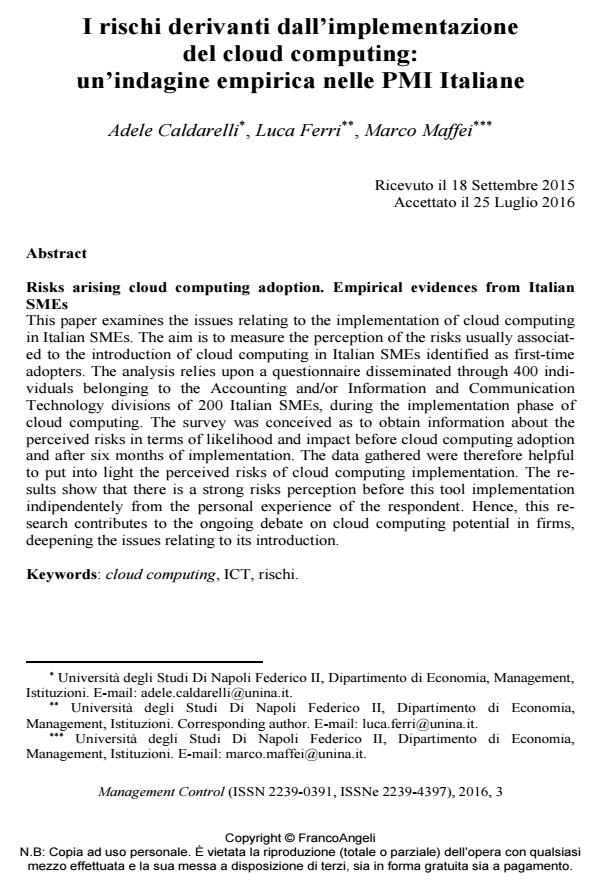I rischi derivanti dall’implementazione del cloud computing: un’indagine empirica nelle PMI Italiane
Titolo Rivista MANAGEMENT CONTROL
Autori/Curatori Adele Caldarelli, Luca Ferri, Marco Maffei
Anno di pubblicazione 2016 Fascicolo 2016/3
Lingua Italiano Numero pagine 22 P. 27-48 Dimensione file 647 KB
DOI 10.3280/MACO2016-003003
Il DOI è il codice a barre della proprietà intellettuale: per saperne di più
clicca qui
Qui sotto puoi vedere in anteprima la prima pagina di questo articolo.
Se questo articolo ti interessa, lo puoi acquistare (e scaricare in formato pdf) seguendo le facili indicazioni per acquistare il download credit. Acquista Download Credits per scaricare questo Articolo in formato PDF

FrancoAngeli è membro della Publishers International Linking Association, Inc (PILA)associazione indipendente e non profit per facilitare (attraverso i servizi tecnologici implementati da CrossRef.org) l’accesso degli studiosi ai contenuti digitali nelle pubblicazioni professionali e scientifiche
This paper examines the issues relating to the implementation of cloud computing in Italian SMEs. The aim is to measure the perception of the risks usually associated to the introduction of cloud computing in Italian SMEs identified as first-time adopters. The analysis relies upon a questionnaire disseminated through 400 individuals belonging to the Accounting and/or Information and Communication Technology divisions of 200 Italian SMEs, during the implementation phase of cloud computing. The survey was conceived as to obtain information about the perceived risks in terms of likelihood and impact before cloud computing adoption and after six months of implementation. The data gathered were therefore helpful to put into light the perceived risks of cloud computing implementation. The results show that there is a strong risks perception before this tool implementation indipendentely from the personal experience of the respondent. Hence, this research contributes to the ongoing debate on cloud computing potential in firms, deepening the issues relating to its introduction.
Parole chiave:Cloud computing, ICT, rischi.
- Controllo della performance nelle aziende dei servizi: contributi e tendenze Selena Aureli, Claudio Travaglini, in MANAGEMENT CONTROL 2/2017 pp.5
DOI: 10.3280/MACO2017-002001
Adele Caldarelli, Luca Ferri, Marco Maffei, I rischi derivanti dall’implementazione del cloud computing: un’indagine empirica nelle PMI Italiane in "MANAGEMENT CONTROL" 3/2016, pp 27-48, DOI: 10.3280/MACO2016-003003